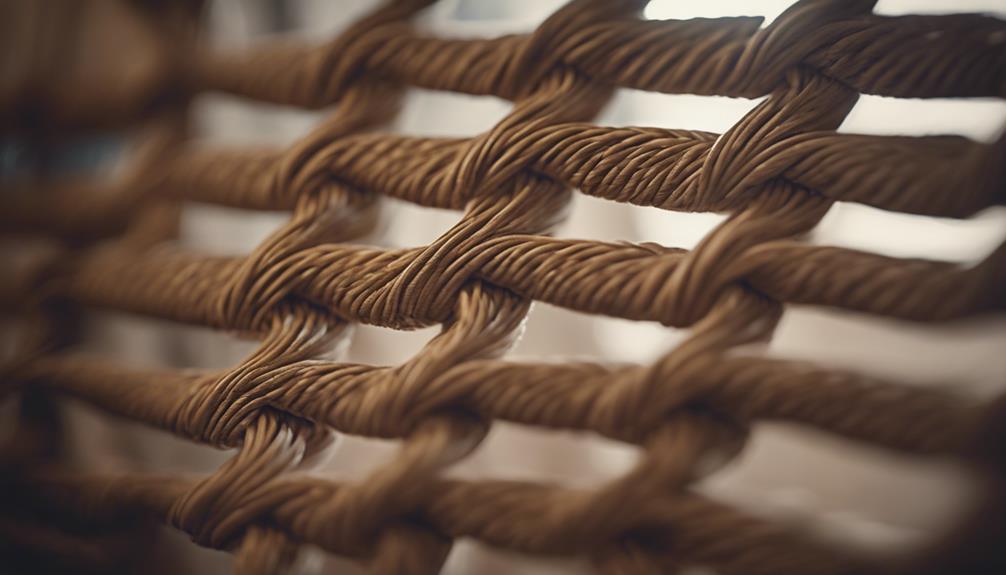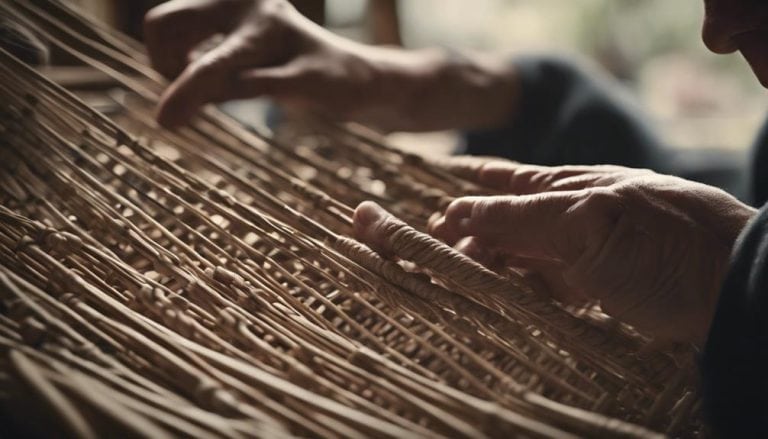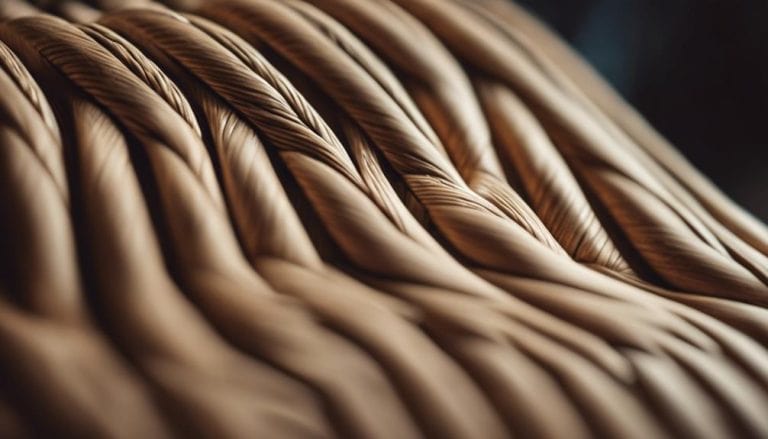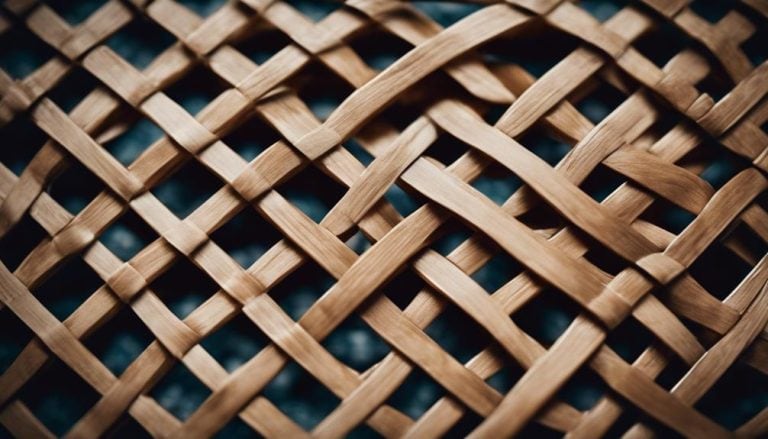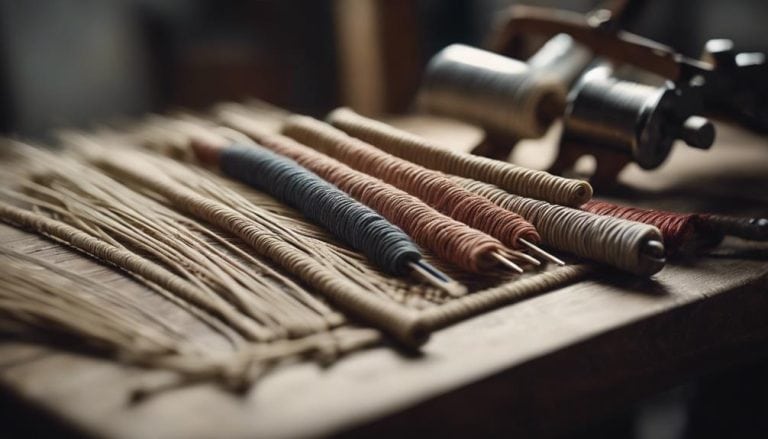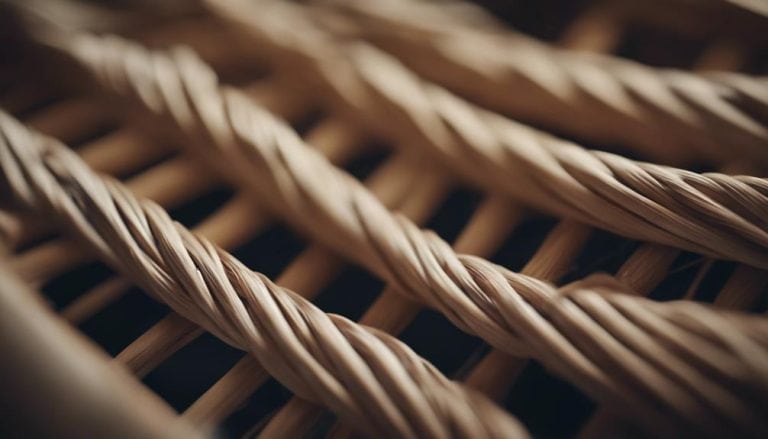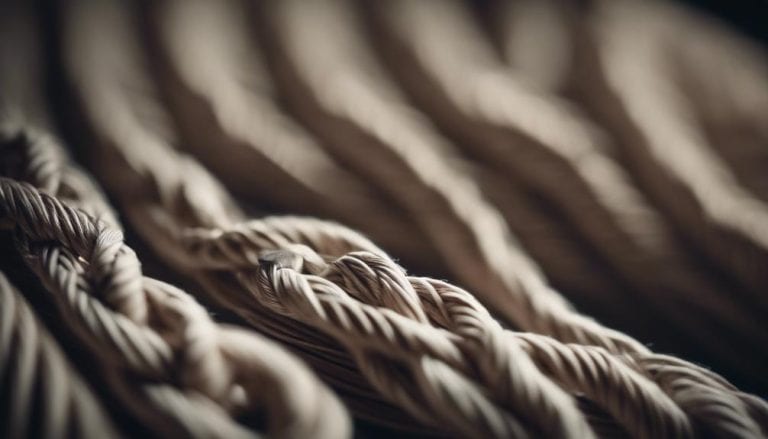Successful Danish Cord Weaving Projects
In a recent Danish cord-weaving project, a skilled artisan transformed a simple wooden frame into a stunning lounge chair with intricate cord patterns that exude elegance and comfort. The attention to detail and precision in weaving techniques truly set this piece apart. But what makes these projects stand out goes beyond aesthetics; it’s about the blend of tradition and innovation that elevates each creation into a timeless work of art.
In exploring successful Danish cord-weaving projects, one finds a blend of tradition and modern design, showcasing the artistry and craftsmanship of this unique technique. These projects exemplify the beauty and skill behind Danish cord weaving, merging heritage with contemporary creativity.
Key Takeaways
- Danish cord weaving showcases intricate patterns and expert craftsmanship.
- Material selection is crucial for durability, aesthetics, and unique textures.
- Danish cord projects exude timeless style, sophistication, and eco-friendliness.
- Weaving techniques offer creative opportunities for versatile and stylish home accessories.
Danish Cord Weaving Techniques
In mastering Danish cord weaving techniques, one must delicately intertwine paper cord around a wooden frame with precision and finesse. The choice of materials is crucial in achieving the desired outcome. Selecting high-quality paper cords ensures durability and a polished finish.
The intricate patterns in Danish cord weaving projects require a keen eye for detail and a steady hand. Advanced patterns, such as herringbone or checkerboard designs, showcase the weaver’s skill and craftsmanship. Material selection is a fundamental aspect of Danish cord weaving.
Opting for the right paper cord thickness and color can significantly impact the final look of the piece. The cord’s tactile quality adds to the furniture’s overall aesthetic appeal and comfort. Experimenting with different materials can create unique textures and visual effects in woven patterns. Mastery of material selection is essential for creating Danish cord projects that stand out for their quality and design.
Danish Cord Dining Chair Project
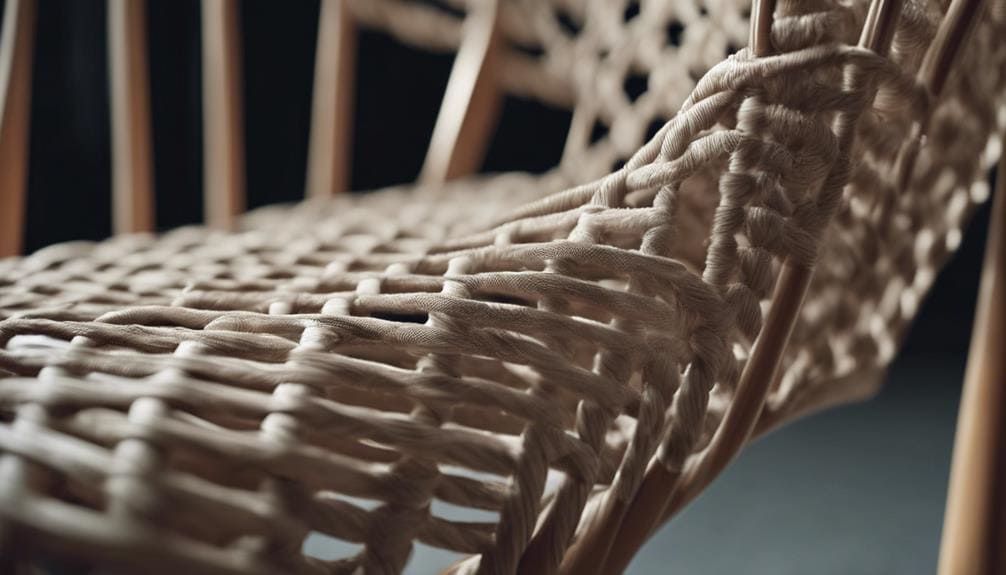
With the intricate patterns and quality craftsmanship inherent in Danish Cord Weaving Techniques, the Danish Cord Dining Chair Project elevates traditional Scandinavian design through the delicate weaving of paper cord around a wooden frame. When embarking on this project, attention to detail is crucial, ensuring the weaving patterns are precise and the material selection is impeccable.
Here is a glimpse into the world of Danish Cord Dining Chairs:
- The rhythmic interlacing of the paper cord creates mesmerizing weaving patterns that enhance the visual appeal and provide structural integrity to the chair.
- Careful consideration is given to the material selection, with the paper cord chosen for its durability, flexibility, and eco-friendly nature.
- Each strand of cord is expertly woven around the wooden frame, weaving a story of craftsmanship and tradition into every inch of the chair.
- The result is a Danish Cord Dining Chair that embodies timeless style, durability, and sophistication, making it a centerpiece in any interior decor setting.
Danish Cord Plant Hanger Tutorial
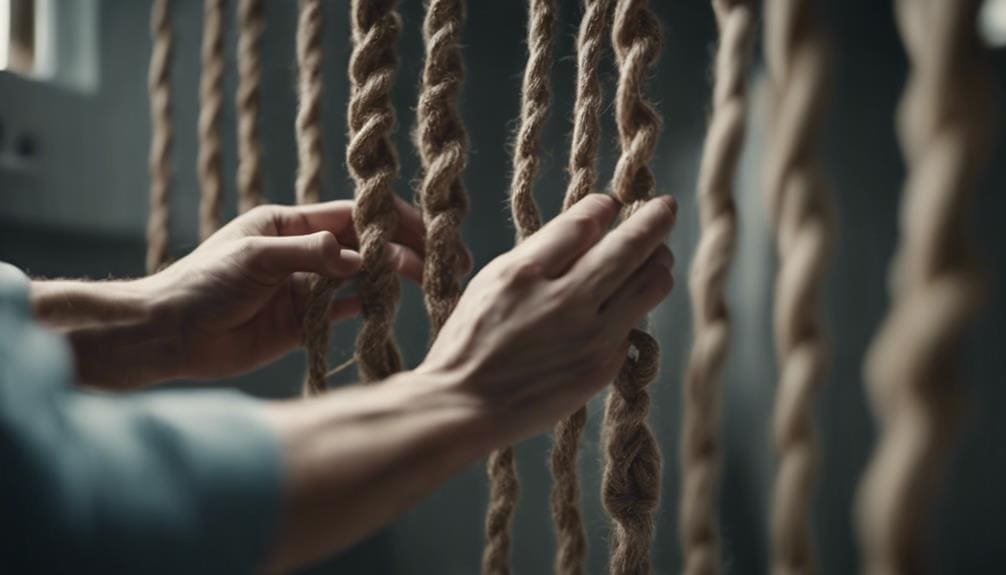
Embarking on the Danish Cord Plant Hanger Tutorial, we delve into weaving a cord around a ring to create a stylish and sturdy home accessory. These macrame planters are a delightful addition to any Scandinavian home decor, offering elegance and modernity. The process involves intertwining Danish cord around a wooden or metal ring, allowing for endless customization with different cord colors and patterns to match diverse interior styles.
The beauty of Danish cord plant hangers lies in their versatility, accommodating various plant sizes and shapes to bring a green oasis indoors. They serve as creative displays for your beloved plants and elevate the ambiance of any living space with their simplistic yet chic design. Whether you prefer a minimalist look or a bohemian vibe, these plant hangers are a perfect DIY project to infuse your home with a dash of Scandinavian charm.
Danish Cord Ottoman DIY Guide
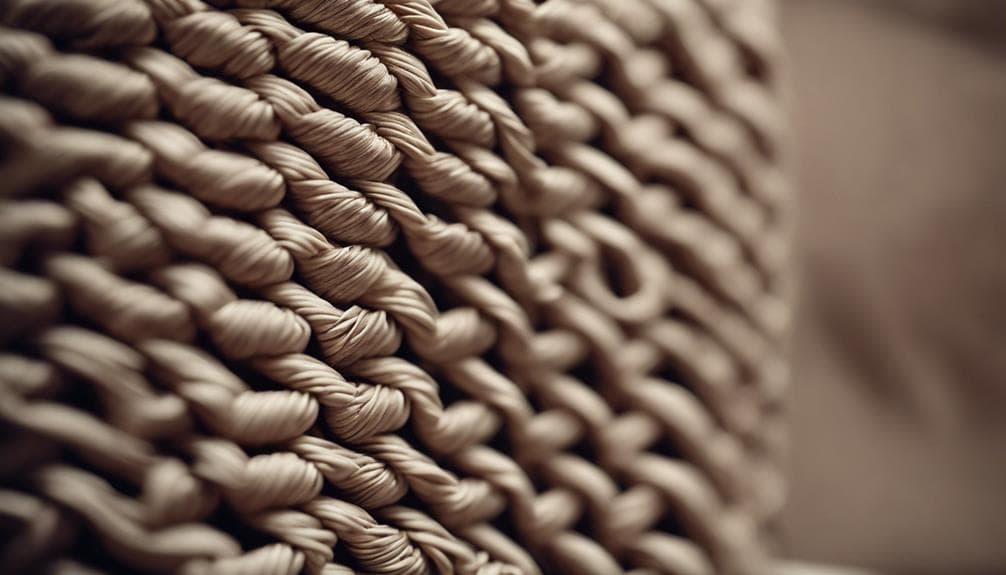
Crafting a Danish cord ottoman entails weaving the cord intricately around a sturdy wooden frame, culminating in a functional and visually appealing furniture piece. As someone who appreciates the artistry of DIY projects, let me guide you through the process:
- Materials Needed:
- Wooden frame
- Danish cord
- Scissors
- Staple gun
- Weaving Technique:
Begin by securing the cord to the frame and weaving it in a criss-cross pattern for a sturdy base. Then, continue weaving in a circular motion to build up the sides.
- Finishing Touches:
Trim any excess cord once the weaving is complete and secure the end. Add a cushion or padding to the top for comfort and style.
- Learning Opportunities:
Engaging in a Danish cord ottoman project yields a beautiful piece of furniture and offers a chance to develop woodworking skills that can be applied to other projects like a danish cord table runner project or a creative danish cord lampshade design.
Danish Cord Wall Art Inspiration
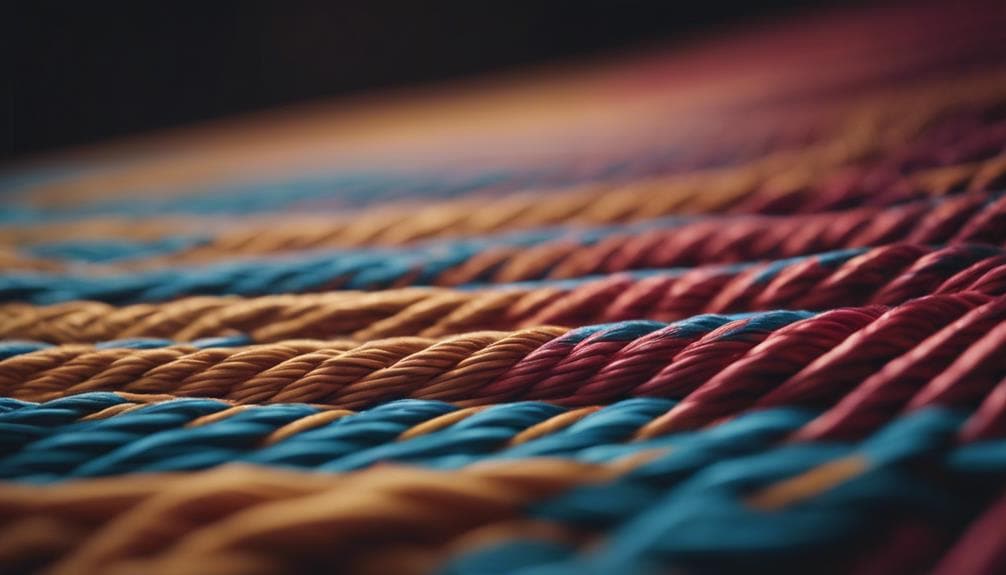
Delving into the realm of Danish cord wall art creation can unveil a world of intricate patterns and unique design possibilities. Regarding Danish cord wall art, weaving requires meticulous attention to detail and precision to achieve a beautifully crafted final product. These pieces add texture and visual interest to a room and can also be customized to fit different styles and color schemes, making them a versatile decor option.
Danish Cord Wall Art Inspiration
Here are some ideas to inspire your Danish cord wall art projects:
| Modern Geometric | Coastal Boho | Custom Designs |
|---|---|---|
| Bold lines and shapes for a contemporary look | Natural textures and earthy tones for a relaxed vibe | Personalized patterns to match your unique style |
| Incorporate triangles, squares, and circles | Use driftwood and seashells for a coastal touch | Choose colors that complement your existing decor |
| Experiment with negative space for a modern feel | Add macrame details for a bohemian twist | Mix and match different weaving techniques for a one-of-a-kind design |
Let your creativity flow and explore the endless possibilities of Danish cord wall art!
Danish Cord Headboard Design Ideas
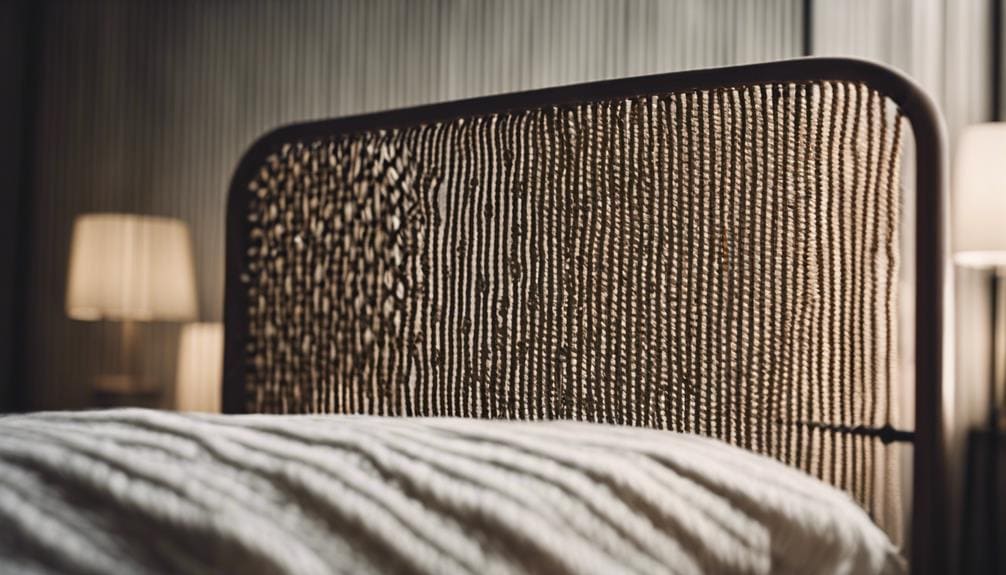
A Danish cord headboard is an exquisite fusion of traditional craftsmanship and modern aesthetics, enhancing any bedroom decor’s visual appeal and elegance. The possibilities are as vast as the imagination when considering Danish cord headboard design ideas.
Here are some inspiring concepts to elevate your bedroom space:
- Colorful Patterns: Incorporate a mix of vibrant hues to create a lively and dynamic focal point in the room.
- Creative Textures: Experiment with weaving techniques to add depth and tactile interest to the headboard surface.
- Customized Elegance: Tailor the Danish cord headboard to match your interior style by selecting specific colors and patterns that resonate with your design vision.
- Scandinavian Sophistication: Infuse your bedroom with the elegance and simplicity of Scandinavian design principles through the artistry of Danish cord weaving.
Frequently Asked Questions
What Is the Nail Spacing for Danish Cord Weaving?
I weave Danish cord with a standard nail spacing of 3/4 inch apart. This ensures tension control and a tight, even weave. Precise nail placement is crucial for the pattern. Varying spacing can affect the weave’s tightness and design intricacy.
How Much Danish Cord Do I Need?
When determining how much Danish cord I need, calculating requirements is crucial. Techniques and tips suggest accounting for potential errors by purchasing slightly more cord than estimated. It ensures a successful weaving project without running out mid-way.
What Is the Difference Between Laced and Unlaced Danish Cord?
When considering the Danish cord, the difference between laced and unlaced lies in the intricate weaving techniques. Laced cord showcases a traditional, decorative pattern with cords intertwining, while unlaced offers a minimalist, straight-line look for a modern aesthetic.
How Big Is a Danish Cord Bench?
A Danish Cord Bench typically measures 40 cm in height, 35 cm in width, and 100 cm in length. I find weaving techniques fascinating in creating such pieces. The standard dimensions provide a unique canvas for creativity.
Conclusion
As I wrap up my exploration of successful Danish cord-weaving projects, I am amazed by the timeless beauty and craftsmanship that each piece embodies. Did you know that Danish cord weaving has been a popular technique for over a century, dating back to the early 1900s? It’s truly fascinating to see how this traditional art form continues to captivate and inspire modern design enthusiasts worldwide.

